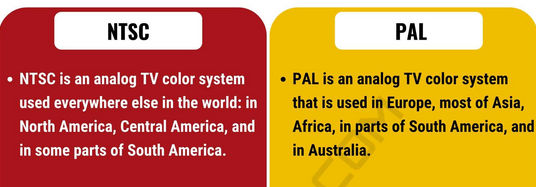NTSC & PAL: THE EXPERTS’ APPENDIX
I swear I’m almost done with this topic! But last week’s blog about NTSC to PAL transfer got a lot of positive attention from technical experts. See two thoughtful responses below in the “Appendix” to round out your education.
And if you’re wondering why this is so important, check out:
When Do Filmmakers Need To Edit a TV-Hour?
At the same time you’re editing a feature, according to distribution expert Peter Broderick.
“Some sales agents [for foreign distribution outside the U.S] ”are only interested in distributing an hour,” he says. “Others are fine to also have a longer version that they may find some limited opportunities to sell.”
Broderick is one of the most accomplished consultants in documentary distribution, which includes the educational market. He says that hour-long versions have other important advantages.
“They are helpful for domestic educational sales. It enables them to be screened in a single class period. Theyalso are helpful for public screenings,” he says.
Read FAQ and our secrets about how we help filmmakers cut down their feature film to a “TV Hour” without killing all their darlings!
Now, onto the 2-part Appendix!
Thank you to Tony Salgado, a Los Angeles colorist, who contributed Appendix A. I quote him liberally:
“Until over the air broadcasters convert over to accepting 24 FPS as a universal deliverables standard we will still be stuck with the legacy old school standards.
“It is important to note NTSC and PAL are often referred to incorrectly as if they only refer to the frame rate recorded.
“Both NTSC and PAL are Standard Definition resolution and frame rate whereas high definition is neither NTSC or PAL as it should be referred to as HD 1920 x 1080 @23.97P, 24P,25P, 29.97P, or 59.94 interlaced. Additionally some over the air broadcasters will request 1280 x 720 @ 59.94P.
“From an editorial standpoint it is paramount when talking with a client or distributor to fully understand the specific resolution, frame rate and final running time the program is to be delivered at.
“Requesting NTSC means a standard definition format at 59.94 interlaced is to be delivered whereas High definition 1920 x 1080 resolution @ 29.97P or 59.94 interlaced is a completely different deliverable.”
As for Appendix B, read these words of wisdom, from Kim Aubrey, owner of ZAP Zoetrope Aubry Productions, a “filmmaker friendly” post house in San Francisco.
“We have to deal with remastering and redelivery of many kinds of masters for other markets at other frame rates, says Aubrey.
“The way to handle conversion varies quite a bit. It tends to be quite individual–based on shooting formats, editing formats, and special concerns such as how text was handled, interlaced vs. progressive and so on.
“Nowadays, more and more foreign distributors and even many domestic broadcasters (like PBS in some instances) will accept masters delivered in their native frame rate, such as 23.98p here. They accept that the workflows are changing fast and they will deal with the technical particulars of a specific market.
“That said, we still do quite a bit of high quality standards conversion at ZAP, and we like to address each show based on the particulars.
“Must duration be preserved?
“True standards conversion does not change TRT while keeping PIX and TRACK in synch.
But there are inevitably some visual artifacts as a consequence.
“Often times, if the film was finished in progressive 23.98p, and there is a requirement to deliver PAL, we look at the possibility of approaching doing the conversion “film style” meaning we conform the 23.98p visual master to 25.0p. That effectively speeds the film up 4.02%, changing duration and to some extent the pace.
“We take the audio elements and do a fancy sample rate conversion that preserves the audio pitch of the original 23.98 master.
“Filmmakers appreciate this option because the visual integrity is preserved; there are no visual artifacts. It’s just like the way 24fps films were always shown in PAL countries at 25.0 fps.
“Of course as frightfully conscientious post people, we agree with your statement:
(Karen had said, “I highly recommend consulting with a tech-savvy post-production supervisor or post house.”)
“We use a terrific hardware/software process for doing standards conversion called ‘Dark Energy Pixel Strings’ for which we have an on-premise license.
So many other details about precise deliverable target TRTs (for segments) and the added complication of NTSC drop frame vs non-drop frame time code which is really hard to explain to sensible Europeans, too deep to get into here.
“I hope this is helpful to you. Again thanks for addressing these issues for doc filmmakers.”
Well, thank YOU, Kim and Tony!
